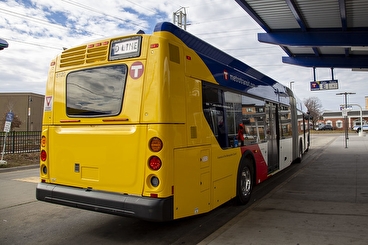Access to jobs by transit increased in 60% of largest US metros during COVID-19 pandemic
Access Across America: Transit 2021 measures access to jobs by public transit for each of the most populous U.S. metropolitan areas and also shows the change in accessibility for each metro since the previous year. Though rankings of the top 10 metro areas for job accessibility by transit changed little between the 2020 and 2021 studies, access to jobs by transit increased in 60% — 30 of the 50 largest U.S. metros.
New Orleans, which had a 48% increase, and Los Angeles, with an increase of 34%, were among cities with the greatest changes in accessibility to jobs via transit. Approximately 14,738 jobs were accessible by a 30-minute transit trip in New Orleans and 51,433 jobs in Los Angeles.
Data for the annual reports is collected in January — making the 2021 edition of the report the first to reflect the impacts of the COVID-19 pandemic. Many agencies reduced commuter-oriented service by necessity during the pandemic as demand for transit use shifted away from traditional office commuting. As a result, there was a small decline overall in the transit accessibility of metro areas, mixed with growth in some metros. This suggests two important trends. First, the average transit accessibility in a metropolitan region is determined by its core service area. Second, most transit agencies continued to prioritize these core areas to maintain service levels.
The vast majority of workers continued to travel to work on site throughout the COVID pandemic, and those that did travel to work were more likely to have lower incomes than those able to work remotely. Though the office commute was widely understood to be a larger share of transit ridership than it actually was, during 2021 transit primarily served “essential workers,” who by definition were not able to telework.
Public transit accounted for an estimated 5% of commuting trips in the United States before the COVID-19 pandemic, making it the second most widely used commute mode after driving.
Key factors affecting the rankings for any metro area include the number of jobs available and where they are located, the availability of transit service, and population size, density, and location.
This annual nationwide data is used to guide key transportation and land-use policy decisions. State departments of transportation, metropolitan planning organizations and transit agencies can apply the data to performance goals related to congestion, reliability and sustainability. In addition, detailed accessibility evaluation can help in selecting between project alternatives and prioritizing investments.

